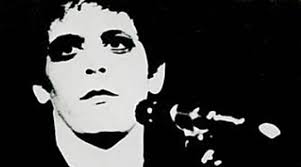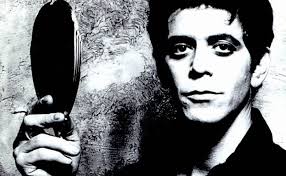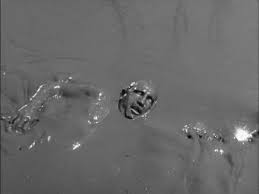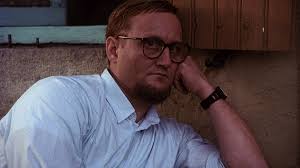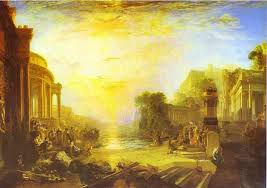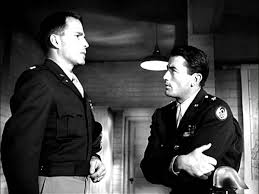The Varnished Culture's Thumbnail Reviews
Regularly added bite-sized reviews about Literature, Art, Music & Film.
Voltaire said the secret of being boring is to say everything.
We do not wish to say everything or see everything; life, though long is too short for that.
We hope you take these little syntheses in the spirit of shared enthusiasm.
Lou Reed

“When Lou Reed sings, a child somewhere dies.” This horrible statement, attributed to our good friend Matthew R, has a black truth in it (like all good and unfair epigrams). Reed’s records were not for everyone and definitely not for children.
Jewish, polysexual, extremely troubled as a youth (his parents committed him to shock treatment at a psychiatric hospital when he was 17) and artsy, he spurned the comfortable Long Island existence and devoted himself to his trade. With some diversions, that is: incredibly, after the release of the Velvet Underground’s Loaded, he was working as a typist at his father’s tax accountancy firm and living with his folks in Freeport; this after several years with the Velvets, Andy Warhol et al and just a year before Transformer!
Though his singularly depraved subject matter and casual style seem at times affected, he was uncompromising and unique. His songs could be hauntingly sad (“Perfect Day“) or belly-laugh funny (“I want to be Black”). They could be social commentary or sneer. Many of them were poems of marginal people with very modern problems. They took as long as he liked: he thought nothing of cutting tracks that went on and on, like an acid trip.
Lou Reed wrote drug or drug-infused songs before anyone and his are still the best: “I’m Waiting for the Man”, “Heroin”, “White Light White Heat”, “I Heard her Call My Name”, “Walk on the Wild Side“, “Street Hassle”. There was a voluptuous excess in his songs that still galvanise, despite the production tricks and purple prose (e.g. “The Blue Mask”). His best songs essay sickness and pain, in which he could be dazzlingly sensitive and astonishingly savage.
The VC’s favourite Lou albums are: “The Bells”, “Berlin”, “Coney Island Baby”, “Transformer“. And a special mention for “Metal Machine Music”, a great way of getting unwanted guests to leave the party, with its hysterical liner notes, including the quip “My week beats your year” and of some late, great songs: “I Believe” (“Songs for Drella”); “Power and Glory” (“Magic and Loss”); “Baton Rouge” (“Ecstasy”); “Who Am I?” (“The Raven”); his great, weird version of Peter Gabriel’s “Solsbury Hill” and “Junior Dad” (“Lulu”).
Best live stuff: a sleepy, foggy, late night “Sweet Jane” from 1969; a speed of light “White Light White Heat” (“Live in Italy”); “Vicious” (“Perfect Night in London”), “Rock & Roll” (“Rock & Roll Animal”) and a torch-song “Berlin” (“Take No Prisoners”).
[Update: Vale Holly Woodlawn, who passed on 6 December 2015 (3.06pm L.A. time). Originally named Haroldo, she came to fame in the film Trash, and was immortalised by Lou in “Walk on the Wild Side”: “Holly came from Miami FLA, Hitchhiked her way across the USA, Plucked her eyebrows along the way, Shaved her legs and then he was a she…”] [Interesting link here: https://ugly-things.com/chasing-the-white-light-lou-reed-the-telepathic-secretary-and-metal-machine-music/] Continue Reading →The Great Gatsby

(by F. Scott Fitzgerald)
The Great American Novel is an absolute synthesis of all that’s great and rotten at the height of the Yankee century.
America is so accomplished and competitive that one tends to overlook the result: a defeated majority. Hence the American theme of ‘starting over’ in a different place, exemplified in the go-west mantra of the 1800s and the eastern push of the 20th century. Gatsby emblematised this push, a doughboy made ‘good’ in the new desert of Dr T.J Eckleburg’s New York.
Born 1896 in Minnesota, F.S.F. grew into a world of American hegemony but dreamed of earlier times; he had a romantic notion of the world and this romance informs both novel and central character, who is a sort of Minnesota farm boy with pretensions. But whilst romantic, this is no romance. It is a tragedy of complex pattern with a coat of hard varnish. Fitzgerald’s (& Gatsby’s) nostalgic reverie is shattered by a post-war world; the shards are shiny and sharp.
Fitzgerald’s original version, like his prototype Tender is the Night, was big and wordy, called ‘Trimalchio’, for the man (in Petronius’ Satyricon) to whose entertainments everyone wishes to attend, who “has a clock in his Dining-Room, and on one purpose to let him know how many Minutes of his Life he had lost.” His editor, Maxwell Perkins, was able to flitch off the fat, leaving the sparse bones and the lush flesh, a spare work of, in Conrad’s phrase, “light, magic suggestiveness”.
Gatsby is hard to pin down. The list of ungrateful guests at the start of chapter four has been compared to the display of naval forces in the Iliad; yet it stays and what’s more, it works. What appears episodic in Gatsby actually serve as the wheels under his yellow limousine, hurtling towards his violent destiny. Each shedding of his assumed persona combine in an apotheosis of tall poppy syndrome, a decline and fall of a class-conscious Icarus.
[NB: the graphic adaptation by Nicki Greenberg, rendering the characters as creatures great and small, but faithfully adhering to the novel, is well worth a look] Continue Reading →The Wages of Fear
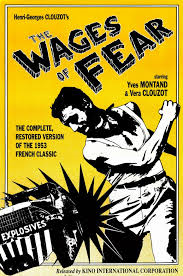
(Le Salaire de la Peur) (dir. H.G. Clouzot) (1953)
Four men volunteer to drive 2 trucks bearing high explosive over rough terrain to help douse an oil fire. It’s a suicide mission but better than remaining stranded in their no-horse town. Real people and real action, gloriously French and politically incorrect.
Continue Reading →Vertigo
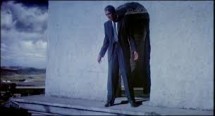
(dir. Alfred Hitchcock) (1958)
Hitch’s greatest, weirdest film melds his various obsessions: food, drink, shopping, murder, sightseeing and icy, vacant blondes.
Continue Reading →The Vanishing
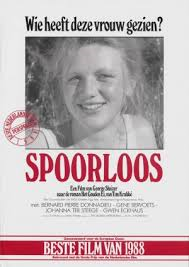
(dir. George Sluizer) (1988)
A Dutch couple on their summer holidays fight, then make-up. She goes to get some things from the service station shop and that’s it – gone girl. From there, we work backwards, into the dark canals of human activity.
Forget the 1993 remake; this French/Dutch original version is brilliant – funny, creepy; one of the best studies of men compelled to plumb life’s mysteries, with fatal results.
The Turner Exhibition
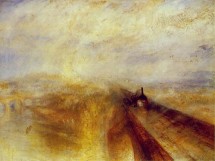
(2013)*
The Tate’s collection of works by J W M Turner came to Adelaide. Rain, Steam and Speed: The Great Western Railway 1844 with its ludicrous train and hare is not in this collection, thank god, the picture that doubtless drove Dali, the consummate draftsman, to say “The worst painter in the world, from every point of view, without the foggiest hesitation or any possible doubt, is named Turner.”
This is harsh, considering JMW’s Lorrain-inspired Carthage paintings and some of the more inspired proto-impressionist swishes of colour but really, he never could draw and his vivid whites, yellows and blacks seem like a cheat’s cover to TVC. The varnish over Leonardo’s works, for example, oxidise and yellow as they age, so that replenishment and restoration is perennially required. But with Turner, corrosion enhances what he threw on the canvas. That’d be a concern. But the gallery was full and respectful. We suppressed our sniggers for the sake of public order. But better to have him than not.
*We note that Salisbury Museum in England is showing, till 27 September 2015, Turner’s Wessex: Architecture and Ambition. How neat to set JWM’s renderings in either fantasyland or a place that ceased to exist 11 centuries ago. No problems with accuracy there….
Continue Reading →Twelve O’Clock High
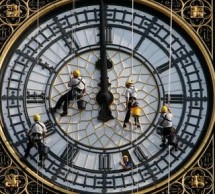
(dir. H. King) (1949)
Bureaucratic office thriller masquerading as WWII bomber film. If Gregory Peck chewed out a shirker today as he lashes Hugh Marlowe, he’d be prosecuted for bullying.
Continue Reading →
Twelve Angry Men
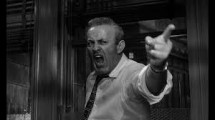
(dir. Lumet) (1957)
Still the best case against majority verdicts, a stagey but compulsive jury-room drama with Henry Fonda a standout as Liberal Conscience.
Continue Reading →Triumph and Demise
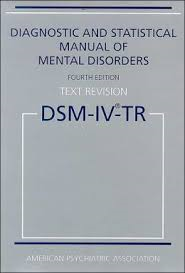
(Paul Kelly)
An account of the Australian Federal Labor Government 2007 – 2013. Kevin Rudd, his bete noire Julia Gillard, et al, stalk about like characters in The White Devil, passionless and brainless villains. You could play ‘Sortes Virgilianae’ in respect of some of the players, substituting DSM 4R.
Continue Reading →Tristan und Isolde
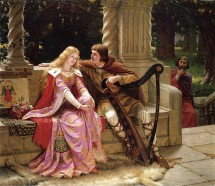
Beware matchmakers. Beware writing opera when in lust with Mathilde Wesendonck. Beware love-of-death; it leads to the death of love, or death-porn. Wagner must have seen himself as Tristan to Mathilde’s Iseult, Lancelot to her Guinevere, when he shelved the Ring and forged perhaps the most beautiful opera of all.
T & I poses a number of problems. Its staging should be spare yet lush. It requires a measure of taste and discretion, for Wagner wrote this work while well-unzipped (he expected the work to be censored unless it was played as parody) and the material can stray dangerously near smut. It needs a great tenor, a great bass, a great mezzo, a couple of very good baritones and the very best soprano and respectfully, it is not always easy to assemble such.
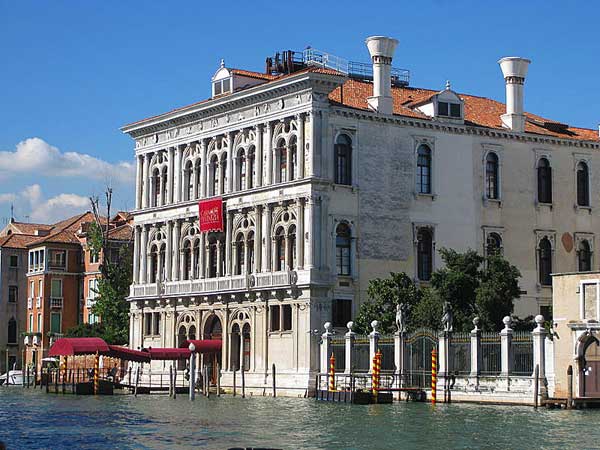
Wagner wrote Act II of ‘Tristan’ in Venice and at Palazzo Vendramin-Calergi, he wrote his own last act.
The story is simple enough. Tristan is the returning Cornish knight-hero. He brings over seas from Ireland, Princess Isolde, to marry old Uncle King Mark. But Isolde desires Tristan and whilst he chastely resists (a la Cyrano de Bergerac), a love potion slipped him by meddling attendant Brangena,breaks his defenses. Love triumphs, then disasters, and Isolde must convince us that she falls in a death swoon over her lover’s corpse. Thus she sings the Liebestod, or ‘Love death’, as she gets wilder and weirder, wondering why we do not see and hear her dead lover, daring herself to die in ‘höchste Lust’ (highest bliss) (cf. ‘Death in Venice’).
We doubt there is anyone ahead of Jessye Norman to do justice to the Liebestod. Jessye, there should be a wide enough portal in Valhalla to admit your mammoth eminence! But TVC approves of the Royal Swedish Opera Naxos recording (2005) and the Baverian State Orchestra film performance (1998), where Hedwig Fassbender and Waltraud Meier respectively give Jessye a run for her money. Meier in particular, with her red hair and wild-eyed stare, represents a truly maddened Irish princess.
In the aforesaid DVD, the staging is odd but interesting, yet filming a stage performance, even with Zubin Mehta conducting (sweating furiously in his white tie and tails), can’t compete with being there. Could not a Neil Armfield, perhaps with the assistance of, say, a Peter Jackson, with perhaps some Henry V touches that obtain from the 1998 production of T & I, make a proper film of it, and realise Dirty Dick’s dream of a total music-drama?
Continue Reading →
